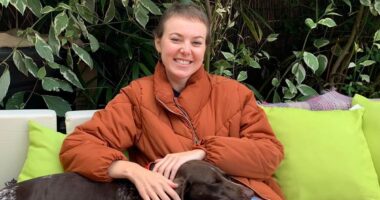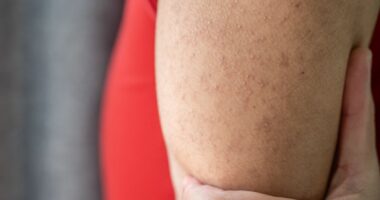Share this @internewscast.com
To be sure, getting any type of movement is good for your health. Per the Harvard School of Public Health, adults 18 and over should get 150 weekly minutes of moderate-intensity exercise in order to increase their longevity. “It doesn’t doesn’t matter how you get there,” says longevity expert Ryan M. Greene, DO, co-founder of Monarch Athletic Club. “There are some studies that say ‘microbursts’ or ‘microdoses’ of exercise have the same cumulative effect as traditional 60- to 90-minute workout sessions.”
However, if your main goal is longevity, the most important thing to focus on during workouts is building and maintaining a healthy amount of muscle on your body. “Muscles enhance metabolic health, regulate blood sugar and cholesterol, and provide the reserves of amino acids for recovery in case of illness or injury,” says longevity expert Halland Chen, MD. Focusing on your body’s muscle mass “also reduces the risk of chronic diseases, such as obesity, diabetes, Alzheimer’s, and cardiovascular disease.”
So what does that look like in action? The two longevity experts shared the tweaks they’d suggest that folks make to their workouts specifically to boost their longevity.
Experts share three ways to tweak your workouts for longevity
1. Spend two workouts a week focused on resistance training
Experts sometimes seem to harp on strength training, but it’s for a reason. “Studies are starting to show, pretty unequivocally, that loss of muscle mass over time is one of the most significant impactors on not only longevity, but quality of life,” says Dr. Greene. “If you are not doing things to contribute to the maintenance of muscle mass, bone density becomes a problem,” he adds.
Dr. Chen points out that muscle mass is naturally compromised as we get older, since our muscles tend to deteriorate if we don’t provide proper maintenance. “I would say resistance training is more important than running, swimming, or brisk walking,” he says. “It’s resistance training that helps maintain the muscle mass, which increases bone density [and reduces the risk of injury].”
Importantly, strength training can also naturally build your balance and mobility—two things that can help decrease the risk of falling. “By building muscle strength and learning how to do movements in the appropriate manner—like squatting, hinging, pushing, pulling—you should, by definition, be improving your balance,” Dr. Green says. And Dr. Chen points out that you want to start working on balance training and mobility when you’re young, since we become less flexible as we age, making it harder to access a full range of motion.
Although getting your heart rate up with some cardio is definitely good for you, too, you should balance out aerobic sessions with two workouts specifically focused on building muscle twice a week, even if that means trading out a couple of weekly runs or walks.
2. Dedicate part of your workout to your smaller muscles
When we hit the gym, we usually focus on the major muscle groups: the back, chest, quads, glutes, core, and hamstrings. But, says Dr. Chen, our smaller muscle groups in our arms, lower legs, and shoulders also deserve attention.
“These muscles don’t do the major lifting or pushing, but maintaining [them] is good for stability and balance,” says Dr. Chen. “Working them out is great so that your body is proportionally developed, which prevents physiological misalignment and pain.”
Don’t forget moves like calf raises or rotator cuff exercises. They might not be as sexy as deadlifts or bench presses, but they’ll keep your full body strong and stabilized.
3. Swap isolated movements for compound ones
When you’re doing a leg press, you’re performing an isolated movement. This means you’re working only on one group of muscles at a time—thus isolating that group.
On the other hand, if you were to get on the seated row, you’re performing a compound movement (i.e., you’re working on several muscle groups simultaneously).
“The highest yield exercises are compound movements. These are the movements that tend to engage larger muscle groups,” says Dr. Greene. Examples of compound movements include squats into overhead presses, bear crawls, and burpees. For instance, “You get a bicep workout by doing a kettlebell swing, but you’re also targeting your core, hips, and glutes.”
For the record, it’s not that you can’t get a good workout by doing isolated moves. “It just tends to be more efficient to do those compound movements,” Dr. Greene adds. You only have so much time to work out; why not make the most of it?
Ready to get started? Try this strength routine to build those muscles:














